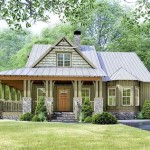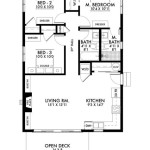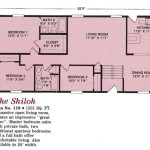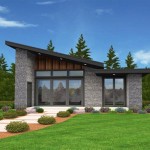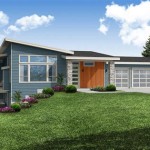A Lake House Plan is a set of architectural plans designed specifically for the construction of a residential dwelling located near a lake or other body of water. These plans typically incorporate a range of features that cater to the unique requirements of waterfront living, such as expansive outdoor living areas, decks or patios, and easy access to the water for swimming, boating, or fishing. One notable example of a lake house plan is the “Lakeview Retreat,” which features a large deck overlooking the lake, a screened-in porch, and a private dock.
When designing a lake house plan, careful consideration is given to factors such as the size and shape of the lot, the orientation of the house to maximize natural light and views, and the integration of outdoor living spaces with the interior of the home.
In the following sections, we will explore the various aspects of lake house plans, discussing their key features, benefits, and considerations. We will also provide tips and advice on how to choose the right lake house plan for your specific needs and preferences.
Here are eight important points to consider when designing a lake house plan:
- Maximize water views
- Design for indoor-outdoor living
- Create multiple outdoor living spaces
- Provide easy access to the water
- Consider the slope of the lot
- Plan for storage of boats and water toys
- Incorporate energy-efficient features
- Choose durable materials
By carefully considering these factors, you can create a lake house plan that meets your specific needs and enhances your enjoyment of waterfront living.
Maximize water views
One of the most important aspects of a lake house plan is maximizing water views. This can be achieved through a variety of design strategies, including:
- Large windows and doors: Installing large windows and doors along the water-facing side of the house allows for expansive views of the lake. Floor-to-ceiling windows are a particularly effective way to create a seamless connection between the interior and exterior spaces.
- Open floor plan: An open floor plan with minimal interior walls allows for clear sightlines to the water from multiple rooms in the house. This creates a sense of spaciousness and maximizes the enjoyment of the lake views.
- Elevated decks and balconies: Decks and balconies positioned above the ground level offer panoramic views of the lake and surrounding landscape. They provide the perfect spot for relaxing, entertaining, or simply soaking up the scenery.
- Rooftop terraces: For houses with multiple stories, a rooftop terrace can provide breathtaking 360-degree views of the lake and its surroundings. It’s an ideal space for outdoor gatherings and stargazing.
By incorporating these design elements into your lake house plan, you can create a home that takes full advantage of its waterfront location and offers stunning views of the lake from every angle.
Design for indoor-outdoor living
A key aspect of lake house design is creating a seamless connection between the interior and exterior spaces. By designing for indoor-outdoor living, you can extend your living space beyond the walls of the house and take full advantage of the beautiful lakefront setting.
- Expansive decks and patios: Large decks and patios provide additional outdoor living space where you can relax, entertain guests, or simply enjoy the views of the lake. They can be furnished with comfortable seating, dining tables, and outdoor kitchens, creating an extension of the indoor living areas.
- Sliding glass doors and windows: Large sliding glass doors and windows allow for easy transitions between the indoors and outdoors. When opened, they create a seamless connection between the living room, dining room, or kitchen and the outdoor deck or patio.
- Screened-in porches and sunrooms: Screened-in porches and sunrooms offer protected outdoor living spaces where you can enjoy the fresh air and lake views without being bothered by insects or harsh weather conditions.
- Walk-out basements: Walk-out basements provide direct access to the backyard and lakefront from the lower level of the house. They can be finished to include additional living space, such as a family room, game room, or guest suite.
By incorporating these design elements into your lake house plan, you can create a home that seamlessly blends indoor and outdoor living, allowing you to fully embrace the beauty of your waterfront property.
Create multiple outdoor living spaces
One of the great joys of lakefront living is being able to enjoy the outdoors. By creating multiple outdoor living spaces, you can take advantage of the beautiful lake views and fresh air from different vantage points and for different purposes.
A deck or patio is a classic outdoor living space for lake houses. It provides a level surface for seating, dining, and entertaining, and it can be easily accessed from the main living areas of the house. Decks can be constructed from a variety of materials, including wood, composite, and vinyl, and they can be customized to fit the specific needs of the homeowner.
For a more private and protected outdoor living space, consider adding a screened-in porch or sunroom. These enclosures allow you to enjoy the outdoors without being bothered by insects or harsh weather conditions. Screened-in porches can be furnished with comfortable seating and dining areas, and they can even be equipped with ceiling fans and lighting to make them more comfortable for evening use.
If you have a walk-out basement, you can create an outdoor living space on the lower level of the house. This is a great option for families with children, as it provides a safe and convenient place for them to play outdoors. Walk-out basements can be finished to include a variety of amenities, such as a family room, game room, or guest suite, and they can be equipped with sliding glass doors or windows to provide easy access to the backyard and lakefront.
By creating multiple outdoor living spaces, you can extend your living space beyond the walls of the house and take full advantage of the beautiful lakefront setting. Whether you’re looking to relax, entertain guests, or simply enjoy the views of the lake, you’ll find the perfect spot to do it in one of your many outdoor living spaces.
Provide easy access to the water
One of the most important aspects of a lake house plan is providing easy access to the water. This can be achieved through a variety of design strategies, including:
Walk-out decks and patios: Walk-out decks and patios are located at ground level and provide direct access to the lakefront. They can be constructed from a variety of materials, including wood, composite, and vinyl, and they can be customized to fit the specific needs of the homeowner. Walk-out decks and patios are a great option for families with young children, as they provide a safe and convenient way to access the water.
Swim platforms: Swim platforms are floating platforms that are anchored in the water. They provide a stable and safe surface for swimming, diving, and sunbathing. Swim platforms can be made from a variety of materials, including wood, plastic, and aluminum, and they can be customized to fit the specific needs of the homeowner. Some swim platforms even include built-in features such as ladders, slides, and diving boards.
Boat docks: Boat docks are structures that extend out into the water and provide a place to moor boats. They can be constructed from a variety of materials, including wood, metal, and concrete, and they can be customized to fit the specific needs of the homeowner. Boat docks can also include features such as boat lifts, storage lockers, and seating areas.
By incorporating these design elements into your lake house plan, you can ensure that you and your family have easy and convenient access to the water. Whether you’re looking to swim, boat, or simply relax by the lake, you’ll be able to do so with ease.
Consider the slope of the lot
The slope of the lot is an important factor to consider when designing a lake house plan. A sloping lot can present challenges, but it can also offer opportunities for unique and creative design solutions.
One of the main challenges of building on a sloping lot is ensuring that the house is properly supported and stable. This may require additional foundation work and engineering to ensure that the house can withstand the forces of gravity and erosion. The slope of the lot can also affect the layout of the house. On a steeply sloping lot, it may be necessary to design a house with multiple levels or terraces to accommodate the change in elevation.
However, a sloping lot can also offer opportunities for creative design solutions. For example, a house built on a hillside can take advantage of the natural slope to create dramatic views of the lake. Sloping lots can also be used to create unique outdoor living spaces, such as terraced gardens or decks that cascade down the hillside.
When designing a lake house plan for a sloping lot, it is important to work with an experienced architect or builder who can help you develop a design that is both safe and aesthetically pleasing. By carefully considering the slope of the lot, you can create a lake house that is both beautiful and functional.
Here are some additional tips for designing a lake house plan for a sloping lot:
- Consider a walk-out basement: A walk-out basement can be a great way to take advantage of a sloping lot. It provides additional living space and easy access to the backyard and lakefront.
- Use retaining walls to create level areas: Retaining walls can be used to create level areas for decks, patios, and gardens on a sloping lot.
- Incorporate stairs and ramps into the design: Stairs and ramps can be used to safely navigate the slope of the lot and access different levels of the house.
- Consider using natural materials: Natural materials, such as stone and wood, can help to blend the house into the surrounding landscape and minimize the impact on the slope.
Plan for storage of boats and water toys
If you plan on keeping a boat or other water toys at your lake house, it is important to plan for adequate storage. This may involve designing a dedicated boat house or storage shed, or simply incorporating storage space into the design of the house itself.
A boat house is a great option if you have a large boat or multiple water toys. Boat houses can be constructed on the shore or over the water, and they provide a secure and protected place to store your boat and other watercraft. Boat houses can also include additional features, such as a workshop, a bathroom, or a living space.
If you do not have the space or budget for a boat house, you can incorporate storage space into the design of the house itself. This may involve adding a garage or carport with enough space to store your boat, or designing a basement or crawl space that can be used for storage. You can also add built-in storage cabinets or shelves to the garage or basement to help keep your boat and water toys organized.
No matter which storage option you choose, it is important to make sure that your boat and water toys are properly secured and protected from the elements. This may involve using straps or chains to secure your boat to the dock or trailer, and covering your boat with a tarp or boat cover when it is not in use.
By planning for adequate storage of your boats and water toys, you can help to keep your lake house organized and clutter-free, and you can also protect your valuable investments from damage.
Incorporate energy-efficient features
Incorporating energy-efficient features into your lake house plan can help you save money on energy bills and reduce your environmental impact. There are a number of energy-efficient features that you can consider, including:
- Energy-efficient appliances: When purchasing appliances for your lake house, look for models that are Energy Star certified. Energy Star appliances meet strict energy efficiency standards set by the U.S. Environmental Protection Agency (EPA) and the U.S. Department of Energy (DOE).
- LED lighting: LED light bulbs use up to 90% less energy than traditional incandescent light bulbs and last much longer. Switching to LED lighting can significantly reduce your energy consumption and save you money on your electric bill.
- Solar panels: Solar panels can be used to generate electricity from the sun, which can then be used to power your lake house. Solar panels are a great way to reduce your reliance on fossil fuels and save money on your energy bills.
- Geothermal heating and cooling: Geothermal heating and cooling systems use the earth’s natural heat to heat and cool your home. Geothermal systems are very efficient and can save you up to 50% on your energy bills.
- Insulation: Proper insulation can help to keep your lake house warm in the winter and cool in the summer, reducing your energy consumption. Be sure to insulate your walls, attic, and basement to maximize energy efficiency.
- Windows and doors: Energy-efficient windows and doors can help to reduce heat loss and gain. Look for windows and doors that are Energy Star certified and have a low U-factor and SHGC rating.
- Smart home technology: Smart home technology can help you to automate your home’s energy consumption. For example, you can use smart thermostats to control your heating and cooling system remotely, and you can use smart plugs to turn off appliances when they are not in use.
By incorporating these energy-efficient features into your lake house plan, you can create a home that is both comfortable and affordable to operate. You can also reduce your environmental impact and help to protect the lake ecosystem.
Choose durable materials
When choosing materials for your lake house, it is important to select durable materials that can withstand the harsh elements and heavy use that comes with lakefront living. This includes materials that are resistant to moisture, rot, and insects.
For exterior materials, consider using fiber cement siding, vinyl siding, or stone veneer. Fiber cement siding is a composite material made from cement, sand, and cellulose fibers. It is resistant to moisture, rot, and insects, and it can be painted or stained to match any style of home. Vinyl siding is a popular choice for lake houses because it is affordable, easy to maintain, and comes in a variety of colors and styles. Stone veneer is a natural material that is durable and beautiful. It can be used to create a variety of looks, from rustic to modern.
For roofing materials, consider using asphalt shingles, metal roofing, or tile roofing. Asphalt shingles are the most affordable option and are available in a variety of colors and styles. Metal roofing is more expensive than asphalt shingles, but it is more durable and can last up to 50 years. Tile roofing is the most expensive option, but it is also the most durable and can last up to 100 years.
For decking materials, consider using pressure-treated lumber, composite decking, or PVC decking. Pressure-treated lumber is a good option for budget-minded homeowners. It is treated with chemicals to resist rot and insects, but it can still be susceptible to damage from moisture and sun exposure. Composite decking is made from a combination of wood fibers and plastic. It is more durable than pressure-treated lumber and is resistant to moisture, rot, and insects. PVC decking is the most durable option and is completely waterproof and insect-proof.
By choosing durable materials for your lake house, you can help to protect your investment and ensure that your home will last for many years to come.










Related Posts

